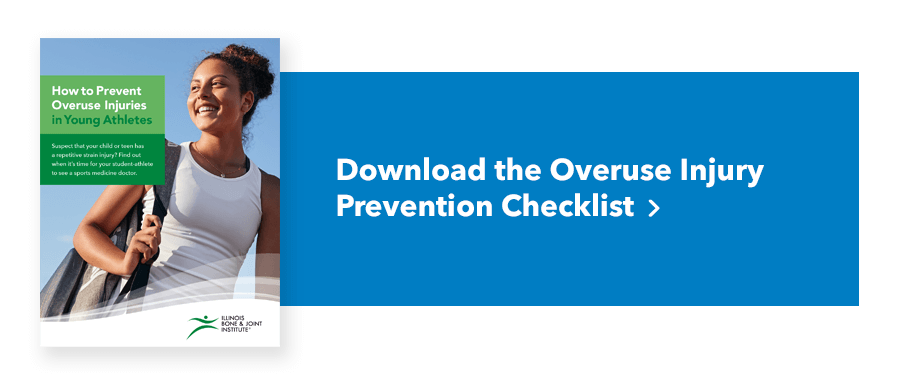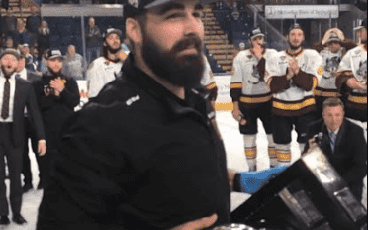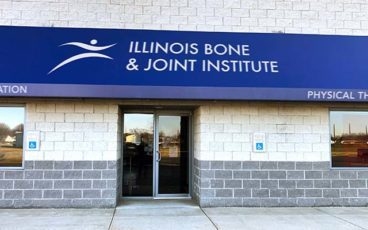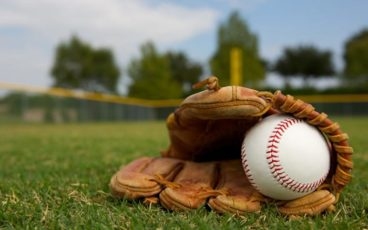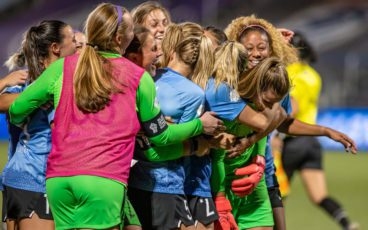This time of the year not only brings back the start of the school year, but it also brings a variety of school activities and sports back to your high schooler’s life. When getting back into action this season, it’s important to be aware of potential injuries that can come with the return to sport. IBJI’s Marc Breslow, MD, is an orthopedic surgeon with fellowship training in sports medicine. He’s had the experience of working with athletes and getting them back to 100%. We asked Dr. Breslow about common high school injuries and what parents and their students can do to prevent an injury from happening.
What are common high school sport injuries?
Breslow says, “High school athletes are prone to both acute (sudden) and overuse injuries. Each sport has its own spectrum of injuries associated with the sport.” (see list below)
“Acute injuries are results of a sudden, traumatic event. If a collision takes place between two players or with an obstacle on the field, an acute injury may occur. These injuries can cause bruises/contusions, sprains (tearing or stretching a ligament), fractures and strains (stretching or tearing a tendon or muscle).
An athlete can also experience overuse injuries. Breslow explains,“Overuse injuries take place gradually over time due to repeated use of various parts of the body during athletic activity. Injury occurs when the body doesn’t have adequate time to recover between these events. With the increase in year-round play of single sports, the rate of injury has been on the rise. As opposed to seasonally changing from lower extremity to an upper extremity sport, this year-round single-sport training gives even less time for the body to recover. Overuse injuries can affect growth plates, bones and soft tissues.
How long should an injured athlete expect to be out of the game?
Breslow states, “[This] depends on the severity of the injury and whether it requires surgical or non-surgical treatment. Most bumps and bruises are insignificant enough that the athlete may continue to participate despite persistent soreness. More significant sprains and non-surgical fractures can take six to eight weeks to heal and afterward may require a period of three to four weeks of physical rehabilitation to safely return to sport. Surgical conditions most times require six months minimum to recover, while others require an entire year to return to the sport at the same level as preinjury. With that said, there is not complete rest during the recuperation period. Instead, there is a gradual rehabilitation process that initially allows healing, then progresses to sport-specific drills and exercises to return the athlete safely to play.”
What sport do you see most injuries come from? Why can they cause more injury?
“The greatest number of injuries I see are from basketball, football and soccer,” said Breslow. “These sports have the highest number of injuries for many reasons. To begin with, these are some of the most popular American high school sports, so the mere volume of athletes participating is higher. Also, over the past several decades, the number of females participating in year-round competitive sports has increased, which translates into a higher number of players to be injured. Football has always had the reputation of being the most aggressive sport, and the highlight on the frequency of concussions has further put the spotlight on the significant injury risk. Despite basketball and soccer being considered non-contact sports, both still involve a great deal of contact. The quick bursts of speed, combined with the need for quick change in direction while running, causes these athletes to be prone to frequent knee and ankle injuries.”
How do athletes get injured during the game?
“There are numerous mechanisms that cause athletes to become injured during the game. Direct contact by another individual or object may cause direct injury to the tissues or body part involved. Injury can range from a break in the skin, or superficial bruise, to a more deep injury or complete failure of the tissue, as in the case of a fracture. Indirect injuries can also occur. With quick change in directions at high velocity, tendons and ligaments can partially or completely tear. Repetitive overuse of a body part, as in the case of a pitcher who overthrows, can cause tearing of tissues as well.”
What is the process the athlete goes through when injured?
“The athlete [when injured] will have to take the initiative to determine if the injury needs to be brought to the attention of the trainer, coach or parent. This may be the initial roadblock to getting care, as many kids are concerned if they report the injury, that they will be pulled from play. When the injury is mild in nature, the initial treatment is classic RICE: rest, ice, compression, and elevation. At times, an over-the-counter anti-inflammatory/pain medication can be utilized.”
“If the injury is more significant, where it involves a sensation of tissue tearing or popping, or when the athlete is in severe enough pain that he/she must be removed from play, a visit to the orthopedist’s office or to IBJI’s OrthoAccess clinic is recommended. During the visit, there will be an evaluation of the [cause] of injury, a physical exam will be performed, and initial X-rays will be obtained. A determination will be made as to whether the athlete requires further imaging, medication, bracing, physical therapy, or surgery.”
How do injuries affect high school athletes compared to professional athletes?
“Since some high school athletes are still growing, they are susceptible to unique pediatric orthopaedic injuries. When the athletes are younger, their bone growth plates are still present and fractures are more likely to occur than ligament injuries. Stress injuries to the joints and bones can occur when new sports are introduced at a high level with a significant change in the child’s activity routine. Their bodies are not fully conditioned and they are thrown into the sport as opposed to having a gradual progression for their musculoskeletal to respond and adapt.”
What advice do you have for parents with a high school athlete?
- Support your child on the field.
- Keep open communication.
- Encourage your kids to explore interests in addition to sports.
- Encourage plenty of sleep, balanced meals, and sports-free days.
- Encourage cross-training and playing multiple sports.
- Pay attention to atypical aches and pains and have them evaluated early.
- Don’t have the athlete return to play until cleared by the trainer and physician.
Should parents bring their child in immediately or should they try home treatments such as ice, pain reliever medication, rest?
“Whether the child should be brought in immediately depends on the severity of the injury. Unless there is an open wound, concussion, or deformity of a bone or joint, most musculoskeletal injuries are not emergent and can be treated at home overnight with rest, ice, elevation, and over the counter pain medications. If the pain persists, the parents can bring their child in to our walk-in OrthoAccess clinic for immediate care. There, the athlete will be evaluated and treated by an orthopedic surgeon who will provide definitive management of the injury.”
How can these athletes prevent another injury from occurring?
“The best way to prevent re-injury is to take time off and wear the proper gear for the chosen sport. Sport specific strengthening and maintaining flexibility are essential. Also, the athlete shouldn’t play through pain.”
What should the athlete expect when they return to their sport?
“Ideally, once the athlete has fully recovered from their injury, there should be full return to sport without restrictions. At times, taping by the athletic trainer, or a brace may be utilized to help prevent recurrent injury. Still, the goal is to return and not focus on the prior injury.”
Spectrum of Sport Injuries
| Baseball: Pitcher’s elbow, sprains, contusions, ligament sprains and muscle sprains |
| Basketball: Strains, sprains, knee injuries and foot, ankle, and finger injuries |
| Cheerleading: Elbow and wrist injuries, fractures, muscle strains, ligament sprains and concussions |
| Dance: Elbow and wrist injuries, lower back injuries, Achilles tendon injuries and Anterior Cruciate Ligament (ACL) injuries |
| Field Hockey: Concussions and head and neck injuries |
| Football: Concussions, ligament sprains and fractures |
| Ice Hockey: Concussions and head and neck injuries |
| Lacrosse: Knee sprains, low back pain, concussions, head and face contusions, ankle sprains and wrist fractures |
| Soccer: Concussions, ligament sprains, fractures and ACL sprains |
| Softball: Pitcher’s elbow, sprains, contusions, ligament sprains and muscle strains |
| Tennis: Ankle sprains, patellar tendonitis, lumbar stress fracture and tennis elbow |
| Track & Field: Fractures, plantar fasciitis, runner’s knee, contusions, hamstring strains, shin splints and patellar tendonitis |
High school athletes can suffer an injury at any time. Whether it’s during a practice or a game, the athlete and their parent should take an injury seriously and seek orthopedic care if needed. For immediate and accessible care, you can download the free IBJI Access app for iPhone and Android. The app shows you the nearest OrthoAccess immediate care clinic locations, so that you can get your athlete in safe hands after an injury occurs. IBJI also offers baseline concussion testing and have an excellent sports medicine team to get your athlete back to performing at their best.
Marc Breslow, MD, is a board-certified orthopedic surgeon with fellowship training in sports medicine. He treats athletes of all ages, from children to the elderly and specializes in treating knee and shoulder problems, he also treats other injuries caused by sports, hobbies or work.
*This content is for information only and is not intended to replace the diagnosis, treatment, or medical advice from your treating healthcare professionals. The content does not provide medical advice, does not constitute the practice of medicine or other healthcare professional services, and does not create a doctor-patient relationship. You should not rely on this information as a substitute, nor does it replace professional medical advice, diagnosis, or treatment. If you have concerns or questions, seek the advice of your healthcare professionals. If you think you may have a medical emergency, call your doctor or 911 immediately. Do not rely on electronic communications or communicate through this website for immediate, urgent medical needs. This website is not designed to facilitate medical emergencies. The use of the information is at the reader’s own risk. The links are provided for information and convenience only. We cannot accept responsibility for the sites linked or the information found here. A link does not imply an endorsement of a site.

